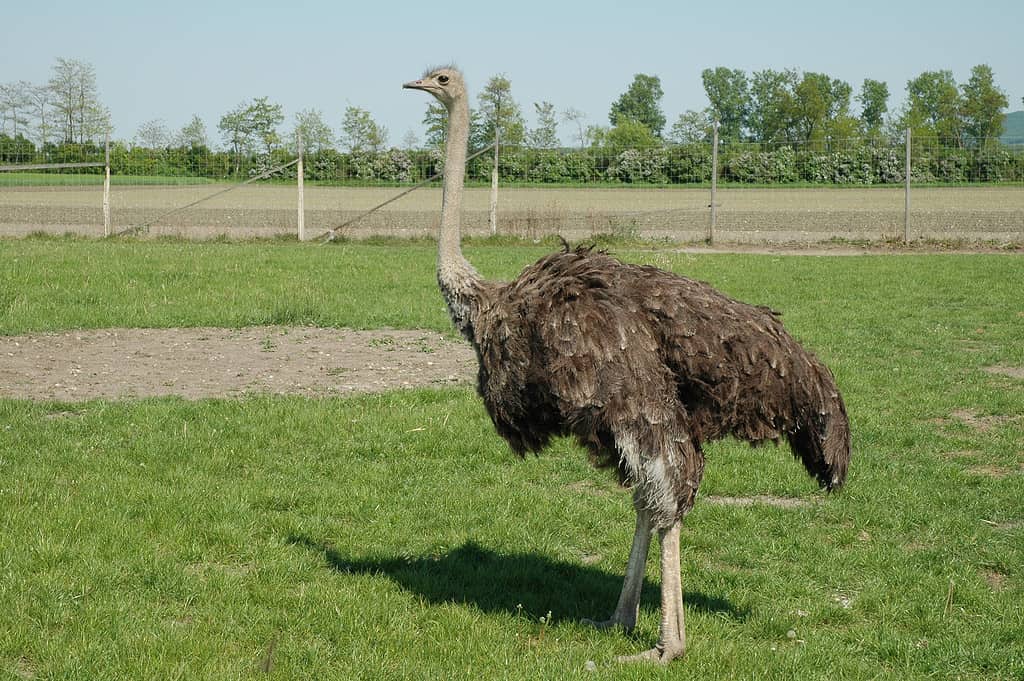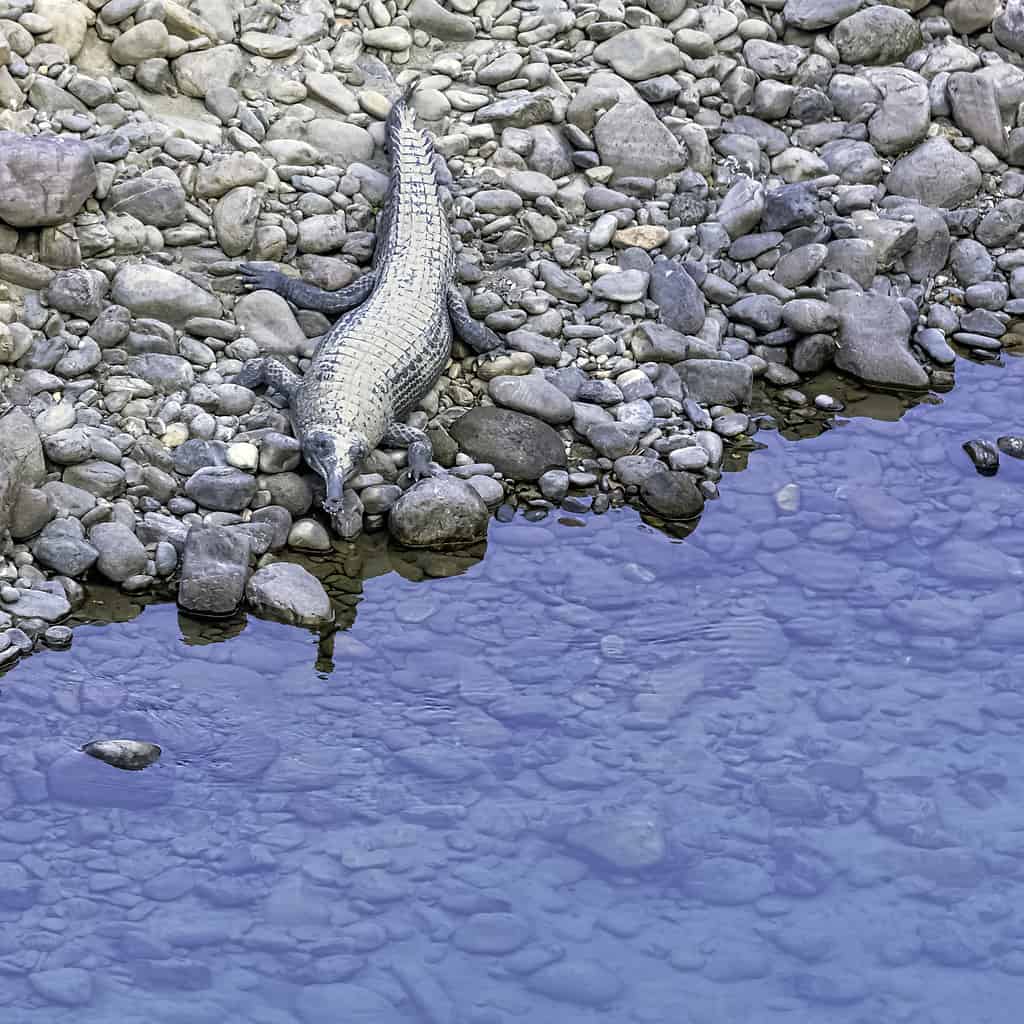
Animals may swallow stones that are small enough to break up material without causing indigestion.
©phanasitti/iStock via Getty Images
Animals have fascinating ways of eating prey. Snakes will swallow their entire prey whole to allow their strong digestive enzymes to break down the animals. Humans and several mammals chew food in their mouths to make it easier for the stomach to separate the vital nutrients for the body. Cows have four stomachs where they chew, swallow, regurgitate, chew, and then swallow in a repeating cycle between their stomachs before digestion.
However, some animals do not have strong stomach acids or teeth capable of chewing. Before seeking prey, they will eat a few small stones first. While that does sound quite peculiar, stone swallowing is a real process animals use for several processes.
Why Do Animals Eat Rocks
Research indicates that many animals swallow rocks to help them digest food better. Gastroliths are animals that swallow rocks to help them break down hard materials like bone or cellulose in plant cells to allow the stomach to digest more easily.
Technically, animals are not truly eating the rocks. They swallow stones and hold them within the stomach or a secondary stomach (gizzard). The rocks are not digested like other foods. Eventually, the rocks will become smooth from the constant friction and acidic juices that they are no longer viable. The animals vomit up the smooth stones and swallow new ones.
What Animals Swallow Stones
Surprisingly, many animals swallow stones to digest their food.
The most common gastroliths are:
- Alligators, crocodiles, gharials, caimans
- Birds: chickens, ostriches, penguins
- Seals, Walruses
- Toothed whales
- Herbivorous dinosaurs (sauropods)
Scientists believe toothed whales swallow stones by accident from eating other prey.
How Do Rocks Help Digestion

Ostriches swallow prey whole, so they need rocks to break down bone and cellulose in plants more easily.
©ggrexy/iStock via Getty Images
Rocks are not meant to be nutritious for the animals. It serves as a tool to help the animal obtain nutrients from swallowed prey.
First, the animal swallows a few small pebbles or stones. Animals carefully sift through the ground, picking the right stones for their size which will be easy to swallow without causing them harm.
Once the stone is chosen, the animal swallows the stone and it slides into their stomach or gizzard. The rocks sit like a lump in their stomach, waiting for the animal to swallow prey.
The actual food will slide down the esophagus (tube connecting mouth to stomach), where it will land in the gizzard first. The stones will rattle against the meat, breaking up hard materials like bones into smaller pieces. Note that some animals do not have a gizzard, and the rocks are stored within the stomach. The same process still occurs with the rocks breaking bones into smaller pieces.
Next, the food will move into the primary stomach where the stomach acids will dissolve everything to allow the normal process of digestion.
The animal is perfectly safe during this process and will store the stones within its body while searching for more food.
What Happens to Stones During Digestion?
During the digestion process, the stones bounce in the gizzard or stomach to weaken harder material enough for digestive enzymes to handle the material better. The stomach juices will smooth out the stone’s rough surfaces, leaving it looking similar to a stone left in a stream for many years.
How Do Animals Replace Their Stones?
When the stones are too smooth and no longer suitable for digestion, the animal will find ways to replace them.
Birds will vomit up the stones and seek out appropriate replacements.
Other animals like crocodiles and alligators will allow the stones to pass through their digestive system along with the food. The stones will be discarded along with the fecal remains of the prey. Afterward, they will find new stones and swallow those before seeking more prey.
Do Stones Serve Other Purposes?

Gharial hold stones in the stomach to break down food and for added weight to stay underwater longer.
©Rott70/iStock via Getty Images
Recently, studies found that several animals may swallow stones for ballast. Crocodiles were observed to swallow stones to help keep their bodies underwater. Crocodiles spend hours of their life in the water, waiting for prey to come close. Scientists claim female saltwater crocodiles can stay underwater for nearly two hours before coming up for air.
To stay underwater for extended periods of time, crocodiles swallow stones to give them extra weight to allow their bodies to sink to make it easier to sneak up on prey. The process is similar to scuba divers adding weights to their belts to sink deeper.
Additionally, crocodiles can take in more air into their lungs when rocks are sitting in their stomachs to help them stay underwater.
Scientists suspect plesiosaurs swallowed stones to help stay underwater longer as well.
However, the scientific community debates whether other marine dinosaurs used stones as ballast. Scientists suspect these dinosaurs would need larger stones or more stones to accommodate their larger bodies to make an effective difference.
Did Dinosaurs Eat Stones?

Stones found in sauropod ribcages show they would swallow stones similar to birds.
©Orla/iStock via Getty Images
Evidence shows many herbivorous dinosaurs like sauropods and plesiosaurs swallowed stones to help them digest foods.
Archeologists found dinosaur skeletons with tiny, smooth rocks near the ribcage where the stomach was possibly located. The stones were small and smoother than the rocks surrounding the fossil, indicating they were shaped differently from the surrounding material. Additionally, the dinosaurs with these smooth stones in their ribcage were herbivores with teeth incapable of chewing their food. Combining the evidence, it proves many dinosaurs would swallow stones to help them digest similar to how birds do today.
Also, geologists tested the smooth rocks alongside the surrounding rock. They found the smooth rocks were not the same material and came from a location several miles away. The only possible explanation to explain this phenomenon would be that the stone was carried by an outside influence, like the dinosaurs’ stomach.
Theories suggest sauropods would eat stones to help break down large plant matter like branches or bark for easier digestion. When the stones were smooth from the stomach acid, they might have regurgitated them up or passed them through their bowels.
Do the Rocks Hurt the Animals?
It is very unlikely the stones hurt the animals. They know how their bodies work and will feel pressure or their stomach straining to digest harder material if the stones are not doing their job effectively.
However, animals that are not gastroliths may have serious health risks if they swallow rocks or sand. Small reptiles like pet leopard geckos or bearded dragons eat crickets and mealworms effectively so that their stomachs handle them. If they accidentally swallow sand or rocks with their meal, it may lead to impaction, a form of constipation where the animal cannot expel feces because it is stuck inside the rectum or colon. If not treated quickly, it could be fatal to smaller animals.
Would Humans or Pets Benefit from Eating Stones?

Playing with large rocks may be fun for pets, but they should not swallow them or chew them.
©Kyryl Gorlov/iStock via Getty Images
No. Humans, cats, and dogs are not meant to eat stones and should not eat stones for any reason. Some pet owners may notice their dog trying to eat a rock in the yard, but that activity should be curbed and replaced with a suitable toy.
Swallowing stones serves no purpose for animals who do not need them. Gastroliths had millions of years of evolution to design their bodies to handle swallowing stones. Birds evolved a secondary stomach specifically to manage stones in their body.
If a pet does swallow a stone, it should be regurgitated quickly, or a pet owner should check their feces to ensure the stone has passed through their system. If the animal makes a habit of swallowing stones, a veterinary professional should be consulted to avoid impaction.

Gastrolith stones appear similar to stones lying on a riverbed when regurgitated.
©Andrei Berezovskii/iStock via Getty Images
While there are animals that will eat rocks, it is not for their nutritional value. Swallowing stones provide a digestive purpose to the animal, allowing them to eat and break down food more effectively. Stone swallowing should be avoided by every other animal who does not need it.
The photo featured at the top of this post is © phanasitti/iStock via Getty Images
Thank you for reading! Have some feedback for us? Contact the AZ Animals editorial team.







